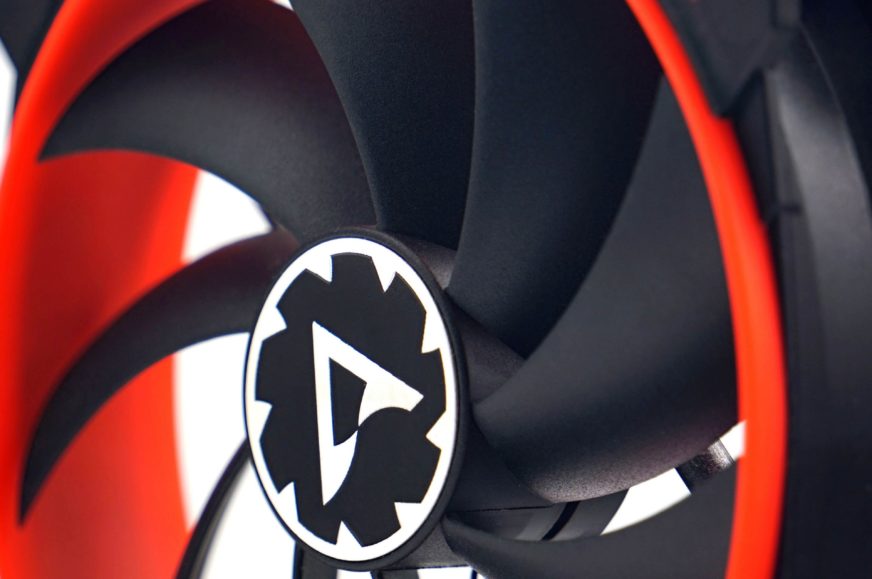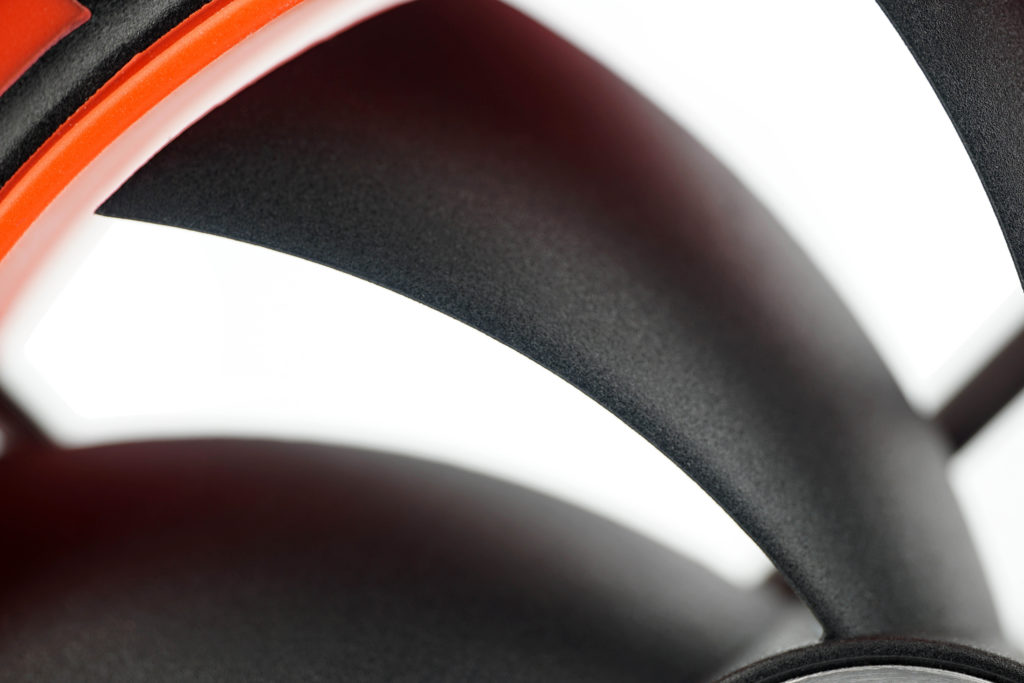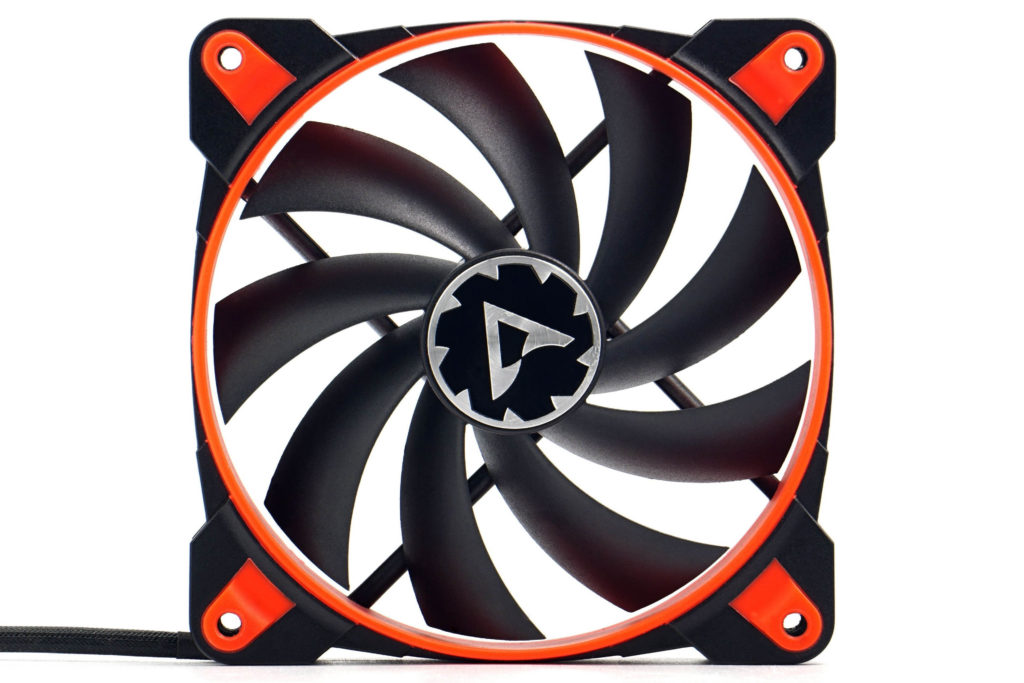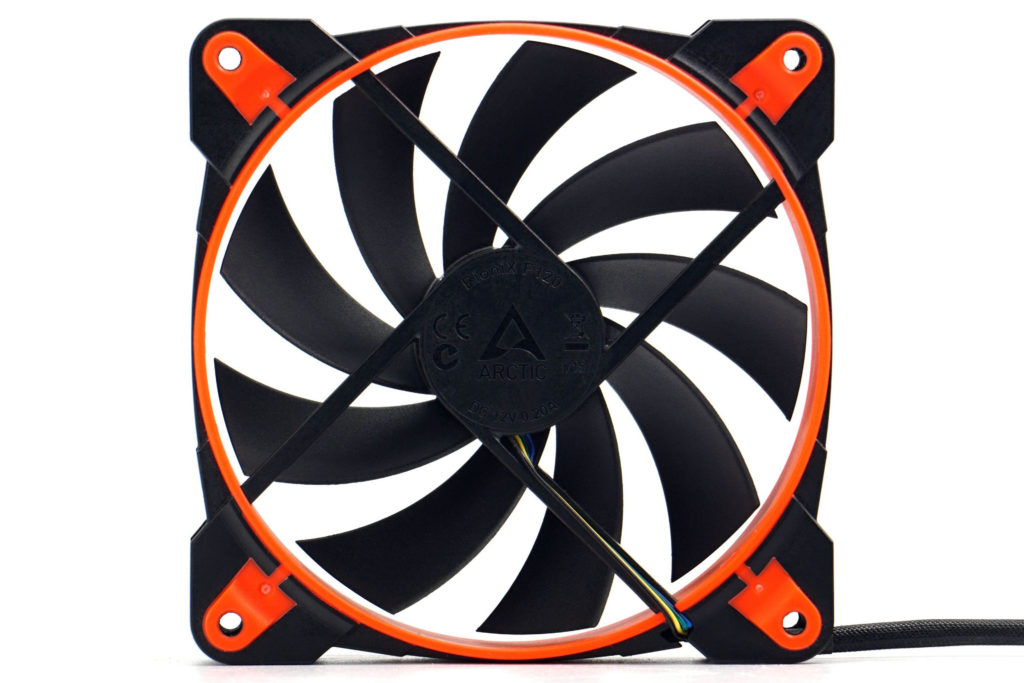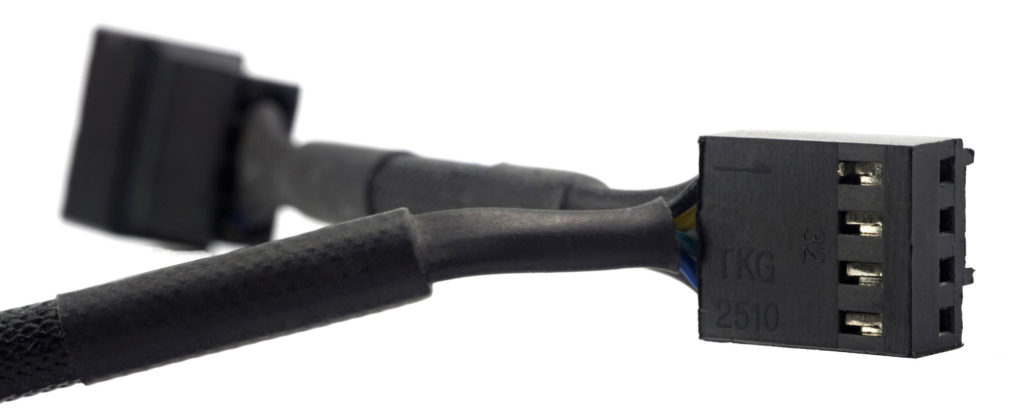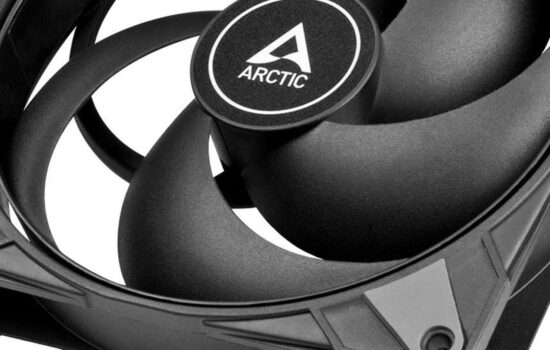Arctic Bionix F120 in detail
We watched the Arctic BioniX F120’s behaviour during tests with our jaws dropped. First of all, because in some situations it really has top efficiency, and at a low price of around ten euros. But that’s how it excels in theoretical applications where nothing stands in it’s way. When it works with a filter, grille or radiator, the magic of the BioniX is gone. Such a significant turnaround is unique and fascinating.
Arctic builds the BioniX F120 presentation around two things in particular. The first is high durability, which is said to be achieved by lower friction (due to the lubricant properties), which results in lower motor temperatures.
The mean time between failures is not disclosed by the manufacturer, but it doesn’t matter (even so, it is never a tangible piece of information, more useful would be the range and especially the lower limit), more important is the length of the warranty, and it is ten years here. That’s high above standard for a fan this cheap, so maybe there really is something to that higher lifetime.
The second thing is a note about rotor blade optimizations to achieve the highest possible airflow at the lowest possible noise. This cliché doesn’t say much, but in our tests everything will show up. But before that, take a look at the parameters and design details of the BioniX F120 fan. It is available in multiple colour options, which is good news for users who also want to match the build aesthetically. Aside from the variant with a white rotor and grey frame, there are five other variants with a black rotor that have grey, yellow, green, white or red trim within the frame.
| Brand and model of fan | Paper specicifations * | Price [EUR] | ||||||||
| Format (and thickness) in mm | Connecting | Speed [rpm] | Airflow [m3/h] | Static pressure [mm H2O] | Noise level [dBA] | Bearings | MTBF [h] | |||
| Motor | RGB LED | |||||||||
| Arctic BioniX F120 | 120 (25) | 4-pin (PWM) | N/A | 200–1800 | 117.00 | 2.10 | 20.0 | fluid | N/A | 10 |
| SilverStone SST-AP123 | 120 (25) | 3-pin (DC) | N/A | 1500 | 96.84 | 1.46 | 23.8 | fluid | 50 000 | 25 |
| Noctua NF-P12 redux-1700 PWM | 120 (25) | 4-pin (PWM) | N/A | 400–1700 | 120.20 | 2.83 | 25.1 | SSO | 150 000 | 13 |
| SilentiumPC Fluctus 120 PWM | 120 (25) | 4-pin (PWM) | N/A | 300–1800 | N/A | N/A | N/A | fluid | 100 000 | 12 |
| MSI MEG Silent Gale P12 | 120 (25) | 4-pin (PWM) | N/A | 0–2000 | 95.48 | 2.21 | 22.7 | hydrodynamic | 50 000 | 31 |
| Asus ROG Strix XF120 | 120 (25) | 4-pin (PWM) | N/A | 1800 | 106.19 | 3.07 | 22.5 | „MagLev“ | 400 000 | 23 |
| Akasa Vegas X7 | 120 (25) | 4-pin (PWM) | 4-pin (12 V) | 1200 | 71.19 | N/A | 23.2 | fluid | 40 000 | 11 |
| Reeven Coldwing 12 | 120 (25) | 4-pin (PWM) | N/A | 300–1500 | 37.54–112.64 | 0.17–1.65 | 6.5–30.4 | sleeve | 30 000 | 12 |
| Reeven Kiran | 120 (25) | 4-pin (PWM) | shared | 400–1500 | 110.10 | 2.95 | 33.6 | fluid | 120 000 | 17 |
| SilentiumPC Sigma Pro 120 PWM | 120 (25) | 4-pin (PWM) | N/A | 500–1600 | 79.00 | N/A | 15.0 | hydraulic | 50 000 | 7 |
| SilentiumPC Sigma Pro Corona RGB 120 | 120 (25) | 4-pin (PWM) | 4-pin (12 V) | 1500 | 56.58 | N/A | N/A | hydraulic | 50 000 | 12 |
| SilverStone SST-AP121 | 120 (25) | 3-pin (DC) | N/A | 1500 | 60.08 | 1.71 | 22.4 | fluid | 50 000 | 18 |
| SilverStone SST-FQ121 | 120 (25) | 7-pin (PWM) | N/A | 1000–1800 | 114.68 | 0.54–1.82 | 16.4–24.0 | PCF (fluid) | 150 000 | 20 |
| Xigmatek XLF-F1256 | 120 (25) | 3-pin (DC) | N/A | 1500 | 103.64 | N/A | 20.0 | „long-life“ | 50 000 | 16 |
* When reading performance values, a certain amount of tolerance must always be taken into account. For maximum speeds, ±10 % is usually quoted, minimum speeds can vary considerably more from piece to piece, sometimes manufacturers will overlap by as much as ±50 %. This must then also be adequately taken into account for air flow, static pressure and noise levels. If only one value is given in a table entry, this means that it always refers to the situation at maximum speed, which is achieved at 12 V or 100 % PWM intensity. The manufacturer does not disclose the lower limit of the performance specifications in its materials in that case. The price in the last column is always approximate.
The blades are narrow, long, curved, and might make you think of the Gentle Typhoon (or the more popular Noctua NF-A12x25), but there are some pretty fundamental differences. The individual blades are at a greater angle.
From a frontal view, compared to the aforementioned fans, you can see the larger gaps between the blades, although their total area is larger on the BioniX F120. This is, among other things, because of the significantly smaller motor housing (with a diameter of 35 mm) or because they use almost the entire depth of the 25 mm profile. From an efficiency point of view this is good, but the flip side of things is that the BioniX F120 ranks on the list of fans brushing against the mesh of conventional nylon filters. To avoid conflict, it is thus necessary to put some other insert, such as a blank frame, between the fan frame and the dust filter.
The surface of the rotor is simple, slightly “sandblasted”, but otherwise without special elements improving acoustic performance or airflow. The workmanship of the rotor is precise, with no obvious flaws in the geometry. How accurately the rotor fits on the axle and how precise the fluid bearings are is questionable. Arctic does, however, insist on the quality of these things.
The lubricant is supposed to be better than conventional, which is supposed to result in lower friction (and thus lower bearing noise), which also results in lower mechanical stress and higher lifetime. And even if there are to be no big differences in this compared to other fans, the added value is in the extra-long, 10-year manufacturer’s warranty.
Among the details, the fan corners are also worth noticing. These are made of some kind of softened material, which is still very hard and not far from the hardness of the rest of the plastic construction. Vibrations will therefore not be dampened too much. However, the long 45-centimetre cable with two connectors is worth praising.
One connector is traditionally for powering the fan itself, the other for connecting a second fan, ideally of the same model, as there is also an attempt to synchronise the PWM – the signal wire is shared between the two connectors.
- Contents
- Arctic Bionix F120 in detail
- The basis of the methodology, the wind tunnel
- Mounting and vibration measurement
- Initial warm-up and speed recording
- Base 7 equal noise levels…
- .. and sound color (frequency characteristic)
- Static pressure measurement…
- … and airflow
- Everything changes with obstacles
- How we measure power draw and motor power
- Measuring the intensity (and power draw) of lighting
- Results: Speed
- Results: Airlow w/o obstacles
- Results: Airflow through a nylon filter
- Results: Airflow through a plastic filter
- Results: Airflow through a hexagonal grille
- Results: Airflow through a thinner radiator
- Results: Airflow through a thicker radiator
- Results: Static pressure w/o obstacles
- Results: Static pressure through a nylon filter
- Results: Static pressure through a plastic filter
- Results: Static pressure through a hexagonal grille
- Results: Static pressure through a thinner radiator
- Results: Static pressure through a thicker radiator
- Results: Static pressure, efficiency by orientation
- Reality vs. specifications
- Results: Frequency response of sound w/o obstacles
- Results: Frequency response of sound with a dust filter
- Results: Frequency response of sound with a hexagonal grille
- Results: Frequency response of sound with a radiator
- Results: Vibration, in total (3D vector length)
- Results: Vibration, X-axis
- Results: Vibration, Y-axis
- Results: Vibration, Z-axis
- Results: Power draw (and motor power)
- Results: Cooling performance per watt, airflow
- Results: Cooling performance per watt, static pressure
- Airflow per euro
- Static pressure per euro
- Results: Lighting – LED luminance and power draw
- Results: LED to motor power draw ratio
- Evaluation





